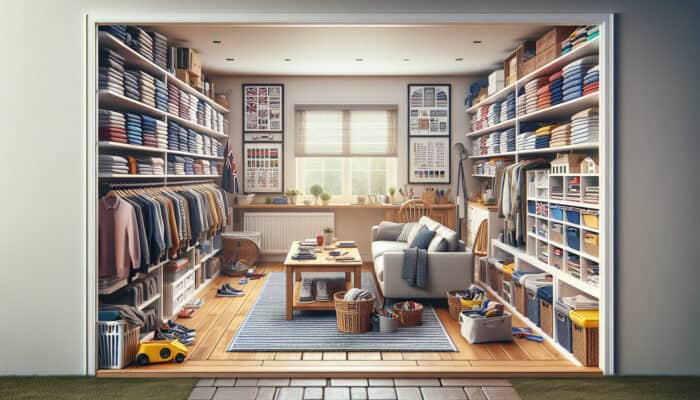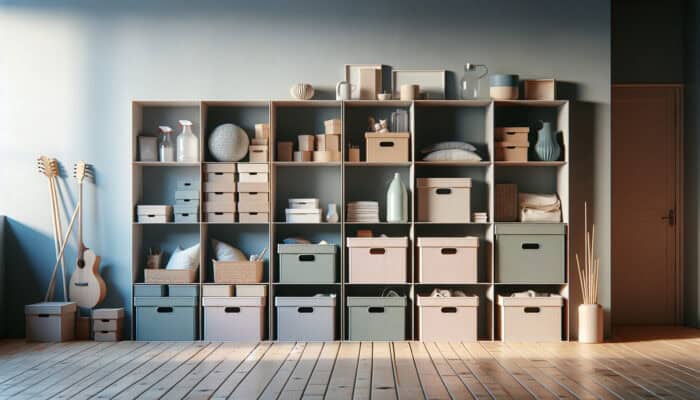Preparation for Clearing Your UK Home
What Items Should You Sort First?

How to Clear a UK Home in One Day: When clearing your home in the UK, it’s essential to start with items that are easily categorised. This method not only creates a sense of progress but also helps to declutter the most frequently used areas. Start with high-traffic areas, such as the living room, kitchen, and hallway, to make an immediate impact. Focus on items such as clothing, books, and miscellaneous household goods. By prioritising these categories, you can streamline the process effectively.
To initiate your decluttering journey, consider sorting the following key items first:
- Clothes
- Books and magazines
- Kitchen utensils
- Old electronics
- Decorative items
- Toys and games
- Documents and paperwork
- Furniture items
This approach provides a clear pathway to reducing clutter, allowing you to see tangible results quickly.
Creating a Plan of Action
A well-structured plan is vital for efficiently clearing your UK home in a single day. Allocate specific time slots for each room and task to ensure you remain focused and motivated throughout the process. Consider breaking down your day into manageable chunks, allowing short breaks to recharge.
To create an actionable plan, follow these essential steps:
- List the rooms to be cleared.
- Estimate the time required for each room based on its size and level of clutter.
- Prioritise rooms based on usage and visibility.
- Schedule short breaks between rooms.
- Prepare a checklist of items to sort.
- Set a timer for each task to maintain momentum and stay focused.
- Stay flexible and adjust the plan if necessary.
A well-thought-out plan will not only enhance efficiency but also reduce the overwhelming feeling that often accompanies a major decluttering session.
Gathering Necessary Supplies
Before diving into the decluttering process, gathering the right supplies is crucial. Having the necessary tools on hand can significantly streamline your efforts and reduce wasted time. Ensure you have a variety of bins, bags, labels, and cleaning supplies to facilitate sorting and disposal.
Essential supplies you should gather include:
- Trash bags (for items to discard)
- Recycling bins (for recyclable materials)
- Storage bins (for items to keep)
- Labels (to mark sorted items)
- Markers (for labelling boxes)
- Cleaning supplies (for post-decluttering clean-up)
- Tools (for disassembling furniture, if needed)
- Donation bags (for items to give away)
Being well-prepared with the right supplies ensures a smoother process, allowing you to focus on clearing out your home effectively.
Setting Up a Sorting Station

Establishing a dedicated sorting station at home can significantly enhance the decluttering process. This area should be easily accessible and spacious enough to facilitate categorising items. Ideally, choose a spot near the entrance or a high-traffic area, making it convenient to transfer items as you sort.
Your sorting station should include:
- Large bins or boxes for sorting categories.
- A table or surface for better visibility and access.
- Labels for clear identification of each category.
- Access to nearby trash and recycling bins.
- Marking pens for quick labelling.
- A clock or timer to track your progress.
- Comfortable seating for breaks when needed.
- Refreshments to keep you energised during the process.
Having a well-organised sorting station sets the tone for an efficient clear-out and helps maintain focus on your decluttering goals.
Expert Insights on How to Clear a UK Home in One Day
How Can Experts Help Streamline the Process?
Engaging the services of professional organisers can transform the daunting task of clearing your home into a manageable process. These experts bring invaluable strategies and insights, significantly improving time management. With their experience, they provide practical solutions tailored to your specific needs while assisting with heavy lifting and disposal logistics.
For example, many homeowners have found that hiring a professional organiser not only speeds up the process but also alleviates the stress that often accompanies decluttering. They implement proven systems, like the “Four-Box Method,” where items are sorted into boxes labelled ‘Keep,’ ‘Donate,’ ‘Sell,’ and ‘Trash.’ This structured approach makes the sorting process straightforward and efficient, paving the way for a successful clear-out.
Furthermore, professionals can advise on where to donate items, ensuring that your unwanted belongings benefit those in need. Their expertise enables you to focus on decision-making rather than logistical challenges, resulting in a smoother and more effective decluttering day.
What Are the Most Effective Expert Techniques?

Expert organisers often utilise specific techniques to maximise efficiency and clarity during the decluttering process. One highly effective method is the ‘Four-Box Method,’ which simplifies sorting by encouraging individuals to categorise their belongings into four distinct boxes: Keep, Donate, Sell, and Trash. This method keeps the focus sharp and prevents hesitation, making decision-making considerably easier.
To implement the Four-Box Method effectively, follow these actionable steps:
- Set your boxes in a clearly defined area.
- Begin with one room at a time.
- Sort items based on their designated box.
- Limit decision-making time to avoid overthinking.
- Regularly revisit each box to ensure accuracy in sorting.
- Consider time-blocking techniques to stay on track.
- Complete one box at a time for a sense of accomplishment.
- Incorporate breaks to maintain energy levels.
These techniques not only streamline the decluttering process but also encourage a focused mindset, making it easier to tackle even the most cluttered spaces.
Can Hiring Professionals Save Time and Money?
Investing in professional decluttering services can be surprisingly cost-effective in the long run. While hiring experts may seem like an upfront expense, their ability to complete the job swiftly and efficiently often outweighs the initial costs. Professional organisers can help you avoid costly mistakes, such as underestimating the time required or disposing of items improperly.
Experts can also provide insights into the potential resale value of items, helping you recoup money from possessions you no longer need. Many clients report that the savings on storage costs, combined with the efficiency of a clear-out, result in a net financial gain.
Moreover, the psychological benefits of a decluttered home—such as reduced stress and improved focus—add immense value that extends beyond mere finances. By investing in professional help, you’re not only saving time but also enhancing your overall quality of life.
How Do Experts Handle Emotional Attachments?
Decluttering often involves confronting emotional attachments to belongings, which can pose a significant obstacle during the sorting process. Expert organisers are trained to handle these delicate situations with empathy, employing psychological strategies that facilitate decision-making without disregarding sentimental value. They guide clients through the process, helping them to distinguish between items of true emotional significance and those that may need to be released.
Professionals often suggest practical methods for dealing with sentimental items, such as creating a memory box for cherished keepsakes or digitising photographs to reduce physical clutter. By offering alternative solutions, they empower clients to let go while preserving meaningful memories.
Additionally, experts encourage a reflective approach, inviting clients to share stories behind items and guiding them to recognise when it’s time to move on. This respectful and supportive method not only helps achieve decluttering goals but also nurtures emotional well-being throughout the process.
Sorting and Organising Your Belongings
How Can You Efficiently Sort Through Your Items?
To efficiently sort through your belongings, adopting a systematic approach is essential. By concentrating on specific categories, you can streamline the sorting process and avoid feeling overwhelmed by the sheer volume of items. Breaking your decluttering task into manageable segments allows for increased focus and productivity.
Start by categorising items into four main groups: keep, donate, sell, and discard. Working room by room allows you to maintain clarity and focus. Consider using a checklist to track your progress and ensure nothing is overlooked.
Here are some effective sorting tips to guide you:
- Begin with areas of high visibility, such as the living room.
- Set a timer to help maintain focus during each sorting session.
- Use the Four-Box Method for clear categorisation.
- Be decisive—limit your decision-making time to prevent hesitation.
- Regularly review and adjust your categories as needed.
- Encourage family members to help make decisions collectively.
- Maintain an open mindset; sometimes, letting go leads to newfound freedom.
- Celebrate small victories to stay motivated throughout the process.
This structured approach allows you to tackle your belongings methodically, ensuring that the decluttering process is both efficient and effective.
What to Do with Sentimental Items?
Sentimental items require special consideration during the decluttering process. While it’s natural to want to hold onto belongings that evoke fond memories, it’s essential to weigh their physical space against their emotional value. Decluttering doesn’t mean erasing memories; instead, it’s about finding a balance that works for you.
Start by selecting a few truly cherished items to keep, while considering alternatives for others. For photographs and documents, digitisation can be an excellent option, allowing you to preserve memories without the physical clutter. Additionally, think about creating a memory box for items that hold special significance, limiting its size to encourage thoughtful selection.
Here are some strategies to handle sentimental items effectively:
- Establish criteria for what deserves to be kept.
- Select items that evoke strong emotional connections.
- Digitise photographs for easy storage and accessibility.
- Create a dedicated memory box to limit the number of physical keepsakes.
- Share stories behind the items with family members.
- Consider donating items that hold meaning but are no longer in use.
- Reflect on the memories associated with each item before making a decision.
- Allow yourself to feel the emotions without guilt during the process.
These steps enable you to honour your memories while still maintaining a clutter-free environment.
Organising Items for Donation or Sale
Preparing items for donation or sale requires a thoughtful approach to ensure they’re in optimal condition and reach the right recipients. Start by cleaning and packaging items properly, as this enhances their appeal and increases the likelihood of a successful sale or donation.
Research local charities that accept donations and understand their specific requirements, as some may only accept certain types of goods. Online marketplaces like eBay or Facebook Marketplace also offer fantastic platforms for selling unwanted items.
To efficiently organise items for donation or sale, consider the following preparation tips:
- Thoroughly clean all items before donating or selling.
- Package items securely to prevent damage during shipping and transportation.
- Take clear, high-quality photographs for online sales to attract potential buyers.
- Research local charities or organisations that accept donations.
- Prepare detailed descriptions for items listed online.
- Provide fair pricing for items you wish to sell.
- Schedule donation drop-offs or pickups in advance to ensure timely delivery.
- Promote your sale on social media to increase visibility and reach a wider audience.
By following these steps, you ensure that your unwanted items find a new home, benefiting both you and your community.
How Do You Handle Large or Bulky Items?
What Are the Options for Disposing of Furniture?
When it comes to large or bulky items, such as furniture, disposal options can vary significantly. It’s essential to consider various avenues, including selling, donating, or recycling. Each option allows for environmentally responsible choices while potentially alleviating your clutter.
If your furniture is in good condition, selling it through platforms like Gumtree or local Facebook groups can provide a financial return. Alternatively, many charities accept furniture donations, particularly if they can sell it in their shops to fund their operations. Research local disposal services that offer pickup or recycling for broken or unusable items to ensure responsible disposal.
Consider these disposal options for your furniture:
- Sell through online classifieds or local marketplaces.
- Donate to local charities or shelters.
- Contact local councils for bulky waste collection services.
- Recycle through specialised recycling centres.
- List items on Freecycle to give away for free.
- Check local furniture reuse organisations for pickup services.
- Ask friends or family if they need any items.
- Utilise social media to advertise your items for sale or giveaway.
By exploring these options, you can ensure that bulky items are disposed of responsibly while also potentially benefiting others in your community.
How to Break Down Large Items for Easier Removal?
Disassembling large items can significantly ease the removal process and make it more manageable. Furniture, such as beds, tables, and cabinets, often requires specialised tools for efficient disassembly. A systematic approach not only simplifies transportation but also maximises space in your vehicle or disposal area.
Use appropriate tools, such as screwdrivers, wrenches, or hammers, to disassemble items safely. Make sure to keep track of screws and fittings by placing them in labelled bags, ensuring you can reassemble items if needed. If you are uncertain about disassembly, consult the manufacturer’s instructions for guidance, which are usually available online for most products.
Here are some effective disassembly tips:
- Gather necessary tools before starting.
- Take photos during disassembly for reference.
- Follow manufacturer guidelines if available.
- Label screws and fittings clearly.
- Work in a clear area to avoid hazards.
- Have assistance available for larger items.
- Consider hiring professionals for complex disassembly.
- Dispose of or recycle broken or unusable components.
By taking the time to disassemble large items properly, you can facilitate a smoother removal process, making your decluttering efforts more effective.
What Should You Do with Appliances and Electronics?
The disposal of appliances and electronics requires careful consideration due to environmental regulations and the availability of recycling opportunities. Many of these items can be reused or recycled, and understanding local options is crucial for responsible disposal.
Before discarding any appliance or electronic device, assess whether it can be repaired or sold. Many repair shops specialise in fixing household electronics, extending their lifespan and reducing waste. If repair isn’t an option, research local recycling centres that accept electronic waste, as many local councils have specific collection days for such items.
Consider the following handling options for appliances and electronics:
- Check if items are repairable before disposing of them.
- Sell functional appliances on online marketplaces.
- Research local recycling programmes for electronics.
- Contact retailers for take-back schemes.
- Look for community recycling events in your area.
- Remove batteries and dispose of them separately if needed.
- Utilise manufacturer recycling options, if available.
- Educate yourself on e-waste regulations in your area.
These strategies ensure that appliances and electronics are disposed of responsibly, contributing to a more sustainable environment.
Cleaning and Final Touches
What Are the Best Cleaning Techniques for a Quick Clear-Out?
Once the decluttering process is complete, a thorough clean-up is essential to ensure your home feels refreshed and inviting. Efficient cleaning techniques can make a significant difference in achieving a quick, clear-out while maintaining a clean environment.
Focus on high-traffic areas first, as these spaces tend to accumulate the most dirt and debris. Utilise effective methods such as vacuuming, dusting, and sanitising surfaces to create a clean slate. For a rapid clean, avoid getting bogged down with details; instead, aim for a quick yet comprehensive approach.
Consider these best cleaning techniques:
- Vacuum and mop floors systematically.
- Dust surfaces, including shelves and windowsills.
- Use disinfectant wipes on commonly touched areas.
- Clean kitchen appliances and countertops thoroughly.
- Pay attention to corners and under furniture.
- Organise cleaning supplies for easy access.
- Utilise a squeegee for streak-free windows.
- Set a timer for each cleaning task for efficiency.
Implementing these techniques will not only enhance the aesthetic appeal of your home but also create a welcoming environment after the clear-out.
How to Ensure a Thorough Clean After Decluttering?
A comprehensive clean is crucial for maintaining a fresh atmosphere throughout your home after decluttering. It’s essential to focus on overlooked areas that often accumulate dust and grime, ensuring that every corner is attended to. This final clean establishes a new baseline for your space, making it easier to maintain moving forward.
Dedicate time to clean each room deep, paying special attention to areas behind furniture and appliances. Dusting before vacuuming is crucial, as it prevents dust from settling on already cleaned surfaces. Consider using eco-friendly products for a healthier living environment.
Here are some deep cleaning tips to ensure thoroughness:
- Move furniture to clean hidden areas beneath and behind.
- Use a vacuum with attachments for intricate spaces.
- Deep clean carpets and rugs as needed.
- Wipe down walls and baseboards to remove dust.
- Clean kitchen cabinets and appliances inside and out.
- Refresh bathrooms with disinfectants and scrubs.
- Ensure all surfaces are thoroughly dried after cleaning.
- Consider using air purifiers to improve indoor air quality.
Following these tips ensures that your home not only looks clean but also feels revitalised after the decluttering effort.
Final Checks and Touches Before Completion
As you approach the conclusion of your decluttering and cleaning process, performing final checks is essential to ensure everything is in order. This step involves inspecting each room to confirm that all items are appropriately sorted and that spaces are clean and organised.
Take a moment to walk through each area, making any necessary adjustments or final touches as needed. This may involve rearranging furniture to improve the flow or executing minor cleaning tasks that were initially overlooked.
Consider these final check items:
- Inspect each room for remaining clutter.
- Ensure all items are in their designated places.
- Confirm that donation items are ready for transport.
- Review that cleaning tasks are complete and surfaces are dry.
- Create a pleasant atmosphere with fresh linens or decorative elements.
- Consider lighting enhancements to create a warm ambience.
- Document before-and-after photos for motivation.
- Celebrate your accomplishments with a moment of gratitude.
These final checks solidify your effort, ensuring that your home feels complete and inviting as you move forward into a clutter-free lifestyle.
Research-Backed Benefits of How to Clear a UK Home in One Day
How Does a Clutter-Free Home Impact Mental Health?
The mental health benefits of a clutter-free home are profound and well-documented. Living in a tidy environment can significantly reduce stress levels and enhance focus, contributing to overall well-being. A chaotic space often results in feelings of overwhelm and distraction, while a clear and organised home promotes tranquillity and clarity.
Studies have shown a direct link between clutter and mental well-being, establishing that individuals in decluttered spaces tend to report higher levels of satisfaction and reduced anxiety. By creating a serene living space, you not only enhance your mental well-being but also cultivate a more productive lifestyle.
To maintain a clutter-free home and its associated mental health benefits, consider implementing these actionable steps:
- Establish regular decluttering schedules.
- Prioritise mindful purchasing to prevent accumulation.
- Engage in weekly cleaning to maintain tidy spaces.
- Utilise storage solutions that promote organisation.
- Incorporate greenery for a calming atmosphere.
- Create designated spaces for all belongings.
- Regularly assess and adjust your space to eliminate unused items.
- Encourage family members to adopt similar decluttering habits.
By adopting these strategies, you can cultivate a home environment that nurtures mental well-being and promotes a sense of peace.
What Are the Financial Benefits of Decluttering?
Decluttering your home can yield significant financial benefits that extend beyond mere aesthetics. By selling unwanted items, you can generate income while reducing storage costs associated with keeping unnecessary belongings. Research indicates that adopting a minimalist lifestyle can lead to long-term financial savings, as it encourages more intentional purchasing habits.
Additionally, letting go of items you no longer need frees up space in your home, potentially reducing the need for external storage solutions that can be costly over time. The financial impact of decluttering often serves as a motivating factor, encouraging individuals to evaluate their possessions more critically and make informed decisions about what to keep.
Consider these expert analyses on the financial benefits of decluttering:
- Identify items with resale value and list them online for sale.
- Reduce ongoing storage costs by clearing out unused items.
- Encourage mindful spending habits to prevent future clutter.
- Participate in local swap events or community sales.
- Utilise the funds from sales for purposeful investments.
- Track your savings to motivate continuous decluttering.
- Consider the depreciation of items and sell accordingly.
- Encourage family members to declutter for shared financial benefits.
These financial advantages demonstrate that decluttering is not just a physical endeavour; it can also lead to a more economically sound lifestyle.
Can a Clear Home Improve Your Daily Life?
A clear home can dramatically enhance your daily life by increasing productivity and creating a more enjoyable living environment. When your space is organised, you’re less likely to waste time searching for items, allowing for a smoother daily routine. The psychological benefits of a tidy home—such as reduced stress and improved focus—translate into an enhanced overall quality of life.
Research supports the positive effects that decluttering has on daily activities, suggesting that individuals who maintain organised spaces tend to experience greater satisfaction in their everyday lives. The clarity achieved through decluttering fosters a more positive mindset and enhances your ability to tackle challenges.Optimise your daily life with a clear home. Consider these real-world examples:
- Create designated spaces for daily essentials to avoid morning chaos.
- Plan weekly clean-ups to maintain tidiness effortlessly.
- Develop a family chore chart to delegate responsibilities.
- Incorporate a “one in, one out” policy for new purchases.
- Establish a command centre for managing schedules and tasks.
- Use organisational tools like drawer dividers for easy access.
- Invest in multifunctional furniture to maximise space.
- Encourage open dialogue about clutter management with family members.
By embracing these practices, you can ensure that the benefits of a clear home extend far beyond the physical space, positively influencing your entire lifestyle.
Maintaining a Clutter-Free Home
How Can You Prevent Future Clutter?
Preventing future clutter requires a proactive mindset and the establishment of consistent habits. Regular decluttering sessions and a commitment to a minimalist approach can significantly reduce the likelihood of accumulation. Mindfulness regarding new purchases is crucial, as it helps you assess the real impact on your living space.
Establishing guidelines for what enters your home is equally important. Consider implementing a one-in, one-out policy, where for every new item acquired, one must be let go. This practice helps maintain balance and prevents unnecessary accumulation.
Here are some effective strategies to prevent future clutter:
- Schedule monthly decluttering sessions to maintain a tidy and organised space.
- Adopt a minimalist mindset before making purchases.
- Assess the utility of items regularly to prevent accumulation.
- Encourage family members to participate in decluttering efforts.
- Create a designated space for incoming items.
- Utilise storage solutions that promote visibility and ease of accessibility.
- Limit impulse purchases by employing a waiting period.
- Regularly evaluate and adjust your belongings as needed.
By integrating these strategies into your routine, you can foster an environment that naturally discourages clutter and promotes sustainable living.
What Are Effective Storage Solutions?
Effective storage solutions are critical in maintaining an organised and clutter-free home. Selecting the right storage options based on your space and needs can significantly enhance organisation and accessibility. It’s essential to consider various storage solutions that promote tidiness without occupying excessive space. Utilising shelves, bins, and organisers allows for better categorisation and visibility of items. Vertical space is often underutilised, so incorporating shelving units can free up floor space and help keep belongings orderly. Additionally, drawer dividers and clear containers can help maintain organisation within cabinets and drawers.
Consider these effective storage options:
- Install shelves in closets and high spaces.
- Use clear bins for easy identification of contents.
- Incorporate under-bed storage for items that are rarely used.
- Utilise multipurpose furniture, such as ottomans with storage.
- Label all storage containers for quick retrieval.
- Create a filing system for important documents.
- Employ pegboards for tools and craft supplies.
- Utilise hooks for hanging items in entryways and garages.
By implementing these storage solutions, you can enhance the functionality of your space while ensuring that everything has its designated home.
How to Establish a Routine for Home Maintenance?
Creating a consistent routine for home maintenance is vital for sustaining a clutter-free environment. Establishing a weekly or monthly schedule for cleaning and organising ensures that tasks remain manageable and prevent the build-up of clutter over time. A well-defined routine fosters accountability and makes maintaining cleanliness a part of your lifestyle.
Consider breaking down tasks into daily, weekly, and monthly responsibilities to ensure a clear understanding of your workload. Daily tasks could include tidying high-traffic areas, while weekly chores might involve vacuuming and dusting. Monthly assessments can focus on decluttering specific areas or reviewing storage solutions for efficiency.
Here are some routine tasks to consider for effective home maintenance:
- Set aside 10-15 minutes daily for quick tidying.
- Designate a day each week for thorough cleaning.
- Incorporate a monthly decluttering session for specific rooms.
- Encourage family members to participate in maintenance tasks.
- Keep a shared calendar for scheduling chores.
- Rotate cleaning responsibilities among family members.
- Utilise checklists to track completed tasks.
- Adjust routines as needed to accommodate lifestyle changes.
By establishing and adhering to a maintenance routine, you ensure that your home remains a clutter-free sanctuary, enhancing your overall living experience.
FAQs
How long does it take to clear a UK home?
The time needed to clear a UK home can vary depending on the amount of clutter and the size of the space. However, with a structured approach, it’s possible to clear a home in just one day.
What should I do with items I no longer want?
Items you no longer want can be sold, donated, or recycled. Research local charities for donation opportunities or utilise online marketplaces for selling.
How often should I declutter my home?
Aim to declutter your home at least once a month. Regular sessions help maintain organisation and prevent clutter from building up.
Can decluttering help with anxiety?
Yes, decluttering can significantly reduce anxiety by creating a more organised and peaceful environment, which promotes mental clarity and relaxation.
What are the best donation options in the UK?
Charities such as Oxfam, the British Heart Foundation, and local shelters are excellent options for donating unwanted items in the UK.
Should I hire a professional organiser?
Hiring a professional organiser can save time and reduce stress, especially if you feel overwhelmed or need help creating a systematic approach to decluttering.
How do I handle sentimental items?
Consider keeping only a few cherished items, digitising others, and creating a memory box to capture memories without excessive clutter.
What cleaning supplies do I need for decluttering?
Essential cleaning supplies include trash bags, recycling bins, cleaning solutions, microfiber cloths, and vacuum cleaners for efficient clean-up.
Is it worth selling items rather than donating?
If items have resale value, selling can provide financial benefits, while donating is a generous option that helps those in need.
How can I encourage my family to declutter?
Involve family members in the process by setting shared goals, creating a fun atmosphere, and discussing the benefits of a decluttered home.





